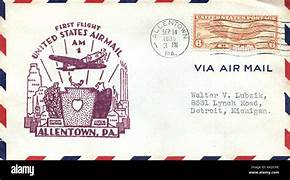On November 22, 1935, a historic event took place in the United States that marked a significant milestone in aviation history—the first Pacific Airmail delivery. This achievement not only showcased the rapid advancements in aviation technology during the 1930s but also highlighted the growing importance of air transportation in connecting distant regions across the globe. At the time, the United States was witnessing a boom in aviation, with a surge in interest and investment in aircraft development and air travel infrastructure. The concept of delivering mail by air was gaining popularity as a faster and more efficient alternative to traditional ground transportation. The vast Pacific Ocean posed a formidable challenge for airmail services, requiring innovative solutions and advancements in aircraft capabilities. The inaugural Pacific Airmail delivery on November 22, 1935, was a momentous occasion that captured the imagination of the public and underscored the significance of air travel in overcoming geographical barriers. The journey was undertaken by a pioneering aviator, pushing the limits of technology and courage. The selected route for this historic flight spanned across the Pacific Ocean, connecting the mainland United States to distant Pacific islands. The aircraft chosen for this daring expedition was a symbol of cutting-edge aviation technology of its time. Equipped with the latest navigational instruments and safety features, the aircraft exemplified the rapid progress made in aeronautical engineering during the 1930s. The successful completion of the Pacific Airmail delivery demonstrated the feasibility and reliability of air transportation over long distances, paving the way for future developments in international aviation. The significance of this event extended beyond its immediate impact on mail delivery. It marked a turning point in the perception of air travel as a viable and efficient mode of transportation for both goods and passengers. The successful delivery of airmail across the Pacific Ocean instilled confidence in the aviation industry and fueled further investments in expanding air routes and improving aircraft capabilities. Moreover, the first Pacific Airmail delivery had broader implications for international relations and trade. It facilitated quicker communication and transportation of goods between the United States and the Pacific islands, fostering economic ties and cultural exchange. The event served as a catalyst for the globalization of air travel, contributing to the establishment of air routes that connected continents and reshaped the world's economic landscape.
1935 U.S.A. – – First Pacific Airmail delivery
